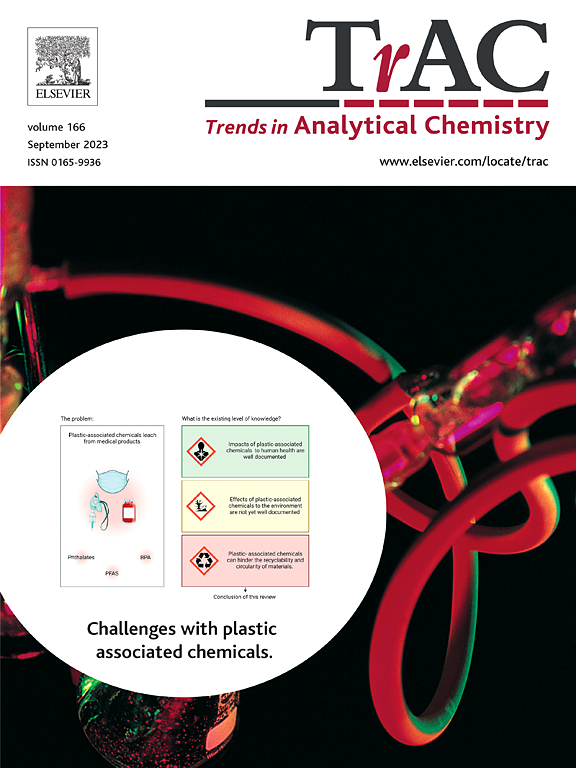Surface-enhanced Raman scattering and surface-enhanced fluorescence dual-mode detection substrates: types, current progress and prospects
IF 12
1区 化学
Q1 CHEMISTRY, ANALYTICAL
引用次数: 0
Abstract
Dual-mode optical platforms based on surface-enhanced Raman scattering (SERS) and surface-enhanced fluorescence (SEF) offer the combined advantages of intuitive and fast fluorescence imaging and the multiplexing capability of SERS. They have demonstrated considerable potential in bio-detection and bio-imaging. Herein, two key characteristics of the successful expansion of dual-mode SERS–SEF substrates are reviewed: the morphology and structure of these substrates and the distance effect between molecules and nano-particles. This review summarises the enhancement mechanism, structure, and properties of SERS–SEF substrates, structure and properties of dual-mode SERS–SEF substrates, and their applications in molecular detection, bio-imaging and immuno-assays are discussed. To solve the problem that SERS and SEF have conflicting requirements regarding the distance between reporting molecules and the substrate, a strategy for optimisation of shell thickness to control dual-mode SERS–SEF substrates is proposed. Finally, we expect the dual-mode SERS–SEF technology to be a powerful tool for the analysis of extreme environments by virtue of the protection of their inert shells.

表面增强拉曼散射和表面增强荧光双模检测衬底:类型、进展与展望
基于表面增强拉曼散射(SERS)和表面增强荧光(SEF)的双模光学平台具有直观、快速的荧光成像和SERS的多路复用能力的综合优势。它们在生物检测和生物成像方面显示出相当大的潜力。本文综述了双模SERS-SEF衬底成功扩展的两个关键特征:衬底的形态和结构以及分子与纳米粒子之间的距离效应。本文综述了SERS-SEF底物的增强机理、结构和性能,讨论了双模SERS-SEF底物的结构和性能及其在分子检测、生物成像和免疫分析中的应用。为了解决SERS和SEF对报告分子与底物之间的距离要求冲突的问题,提出了一种优化壳厚的策略来控制SERS - SEF双模底物。最后,我们期望双模SERS-SEF技术能够通过保护其惰性壳而成为分析极端环境的强大工具。
本文章由计算机程序翻译,如有差异,请以英文原文为准。
求助全文
约1分钟内获得全文
求助全文
来源期刊

Trends in Analytical Chemistry
化学-分析化学
CiteScore
20.00
自引率
4.60%
发文量
257
审稿时长
3.4 months
期刊介绍:
TrAC publishes succinct and critical overviews of recent advancements in analytical chemistry, designed to assist analytical chemists and other users of analytical techniques. These reviews offer excellent, up-to-date, and timely coverage of various topics within analytical chemistry. Encompassing areas such as analytical instrumentation, biomedical analysis, biomolecular analysis, biosensors, chemical analysis, chemometrics, clinical chemistry, drug discovery, environmental analysis and monitoring, food analysis, forensic science, laboratory automation, materials science, metabolomics, pesticide-residue analysis, pharmaceutical analysis, proteomics, surface science, and water analysis and monitoring, these critical reviews provide comprehensive insights for practitioners in the field.
 求助内容:
求助内容: 应助结果提醒方式:
应助结果提醒方式:


